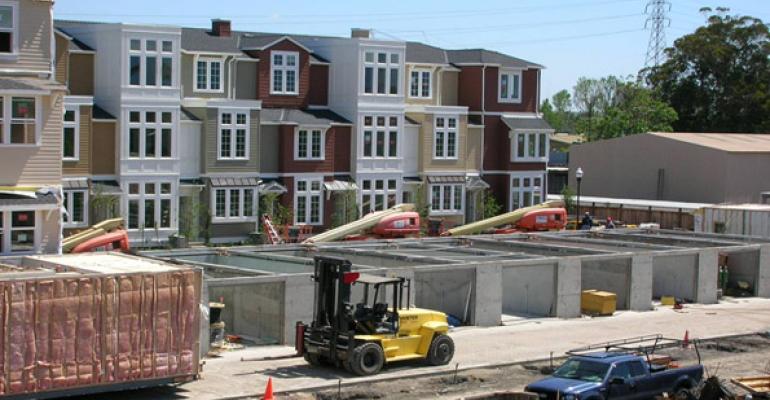(Bloomberg View)—In the early 2010s, economic development emphasized renting over homeownership and young people over families, and clustered economic activity in urban cores instead of outlying areas. This model didn't need much from the political system. But trends in recent years, affirmed by the latest census data, show that we're going to need a different framework in the years to come, and it's not clear yet if the economy and political system are up to the task.
That early 2010s framework was born more out of necessity than choice. The housing and mortgage markets were smoldering craters by 2008, so homeownership was out and renting was in. From 1993 to 2007, the number of renting households in the U.S. was flat at 35.1 million. From 2007 to 2016, the number increased by more than eight million.
With the suburban-focused homebuilding industry in shambles, as the rental vacancy rate plunged, apartment construction boomed. And where to build the apartments? Near job centers in urban cores. An urban renaissance had been building in cities for 20 years and crime had fallen, and thanks to an influx of young, single, well-educated workers, cities boomed.
For urban cores, the early 2010s were a sweet spot of demographics and the economic cycle. The peak age cohorts of the millennial generation born between the late 1980s and early 1990s were hitting their mid-20s, ages when they were entering the workforce and looking to rent rather than buy homes. Largely unmarried and childless, they weren’t worried about the quality of local public schools. And economically, even if they had wanted to buy houses, jobs were scarce, wages were low, student loans had to be paid, and credit remained tight both for borrowers and residential builders.
This framework suited the political system just fine. Cities and states were still grappling with budget holes created by the great recession, and weren't in a position to pay for the infrastructure that comes with suburban-style development, nor the costs of new and improved schools. Local political interests opposed to construction and density were mostly kept at bay as apartment construction was limited to a relatively few urban core neighborhoods.
But every year that passes, the more population patterns are starting to look like the old sprawling dynamic serving suburban and exurban demand. Brookings says that 2012 was the peak of the "back to the city" movement. Urban core population growth is trailing off, and exurban population growth is surging. In 2017, the number of homeowning households increased by over a million while the number of renting households fell, the first drop in renting households since 2004.
The economic development model of the 2010s is ill-suited to address this new reality, so we'll need a new one. If people are moving to suburbs and exurbs because the urban cores are "full," with high rents and home prices, then the question becomes: Do politicians fight anti-development interests like homeowners who have sought to block construction in their neighborhoods? If people are moving to the suburbs and exurbs because they're getting older and want to buy homes and raise families out there, like generations before them, then the question becomes how to address transportation and education needs these commuters and families have. But roads, transit systems, schools and teachers cost money -- and that may mean raising taxes significantly for the first time in years, a test of the political system with an uncertain outcome.
Meanwhile, urban cores have to worry about the possibility of being overbuilt. As millennials age into their 30s and homeownership is on the rise, demographics are now moving against urban landlords. As people move into the suburbs and exurbs, they may want employment options other than long commutes into urban cores -- a threat to the sparkling new corporate campuses built for this cycle. These questions will become more pressing whenever we get an economic downturn and downtown demand softens.
We know how and what to build when we're dealing with an influx of young urban renters. But what will they want as they age into their next phase of life, and how can policy makers meet their needs?
This column does not necessarily reflect the opinion of the editorial board or Bloomberg LP and its owners.
Conor Sen is a Bloomberg View columnist. He is a portfolio manager for New River Investments in Atlanta and has been a contributor to the Atlantic and Business Insider.
To contact the author of this story: Conor Sen at [email protected] To contact the editor responsible for this story: Philip Gray at [email protected]
For more columns from Bloomberg View, visit Bloomberg view
COPYRIGHT© 2018 Bloomberg L.P

